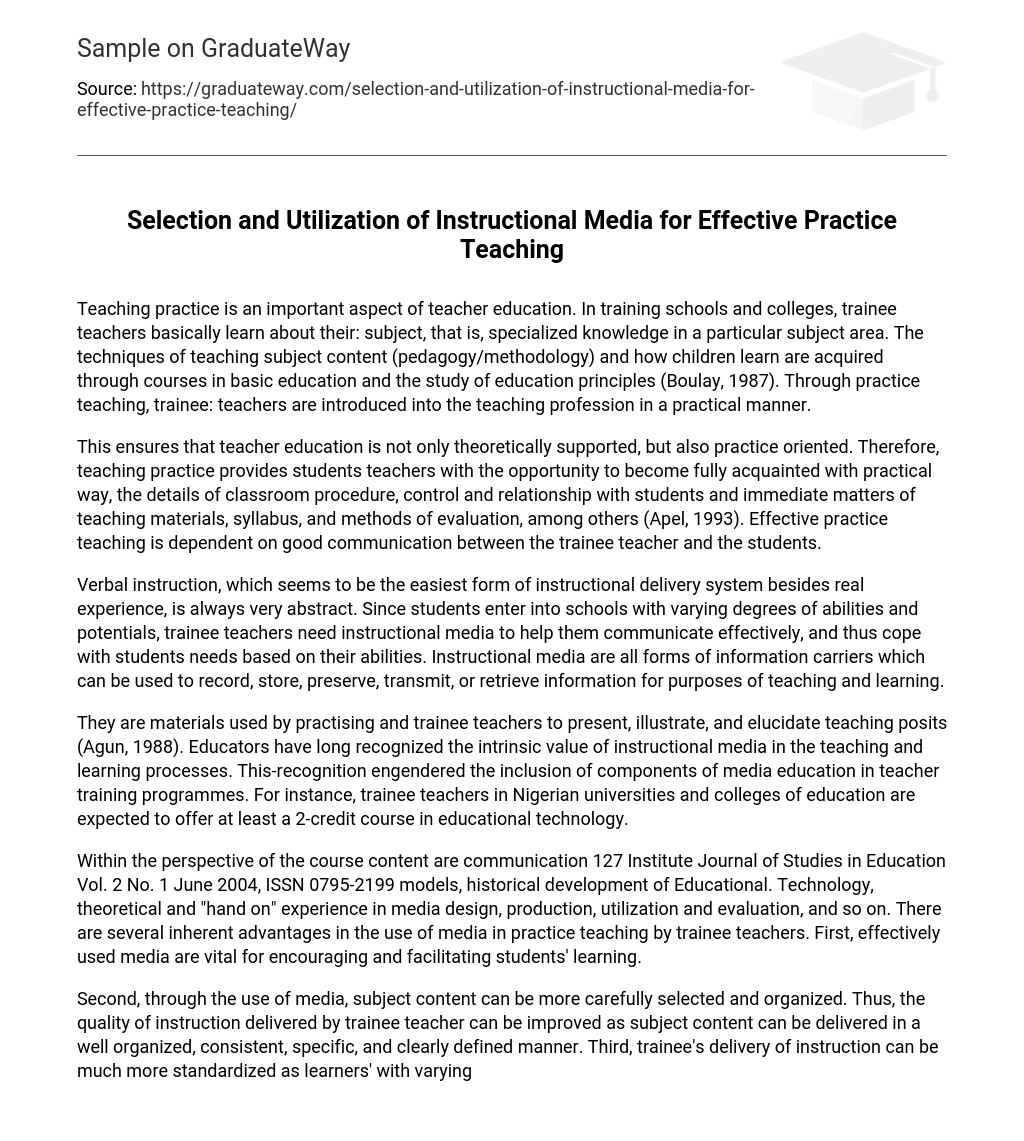Teaching practice plays a crucial role in teacher education. In training institutions, aspiring teachers acquire specialized knowledge in various subject areas. They also learn teaching techniques and principles of education through basic education courses and study. By engaging in practice teaching, trainee teachers gain practical experience in the field of education.
This guarantees that teacher education is not only backed by theory, but also focused on practical application. Hence, the teaching practice enables student teachers to fully familiarize themselves with the practical aspects of classroom management, such as procedures, discipline, and student interactions, while also addressing immediate concerns related to teaching materials, syllabus, and evaluation methods (Apel, 1993). Successful practice teaching relies on effective communication between the trainee teacher and the students.
Verbal instruction is abstract and the easiest instructional delivery system after real experience. Trainee teachers require instructional media to effectively communicate with students and cater to their individual needs based on abilities. Instructional media encompass various forms of information carriers used for recording, storing, preserving, transmitting, and retrieving information for teaching and learning.
According to Agun (1988), instructional media are materials employed by both practicing and trainee teachers to effectively present, illustrate, and clarify teaching perspectives. The value of these media in the teaching and learning processes has long been acknowledged by educators, leading to the incorporation of media education in teacher training programs. In Nigerian universities and colleges of education, for example, it is mandatory for trainee teachers to complete a minimum of a 2-credit course in educational technology.
In the course content, communication 127 Institute Journal of Studies in Education Vol. 2 No. 1 June 2004, ISSN 0795-2199 discusses models, the historical development of Educational Technology, theoretical and “hand on” experience in media design, production, utilization, and evaluation. One of the benefits of using media in practice teaching by trainee teachers is that they are crucial for encouraging and facilitating students’ learning.
Another benefit of using media in instructional delivery is that it allows for the careful selection and organization of subject content. This, in turn, improves the quality of instruction provided by trainee teachers by delivering subject content in a well-organized, consistent, specific, and clearly defined manner. Additionally, using media enables trainees to deliver instruction in a standardized way, ensuring that learners with varying abilities receive the same message and their individual differences are accommodated.
Using instructional media during practice teaching can improve instruction by increasing engagement and enjoyment for learners. Incorporating dynamic images and special effects can effectively reduce boredom. Moreover, utilizing media in the classroom enables different forms of interaction, including student-student, student-teacher, and teacher-student interactions. These interactions can be encouraged through pre-instructional planning that integrates principles such as stimulus variation, feedback, reinforcement, and learner participation.
Media offer the advantage of saving teaching time while imparting a significant amount of information. Additionally, they have the potential to generate students’ needs and foster questioning, thus sparking their interest, sustaining it, and stimulating their imagination. Generally, media promote the utilization of communication techniques that are specific to the classroom setting. Consequently, learners should be supported, motivated, and encouraged not only in acquiring knowledge but also in continuously pursuing learning (Blythe-Lord, 1991; Farrant, 1981; Francis, 1985; Genhardt, 1982; Kemp & Smellie, 1989; and Nicholls,
1975).





